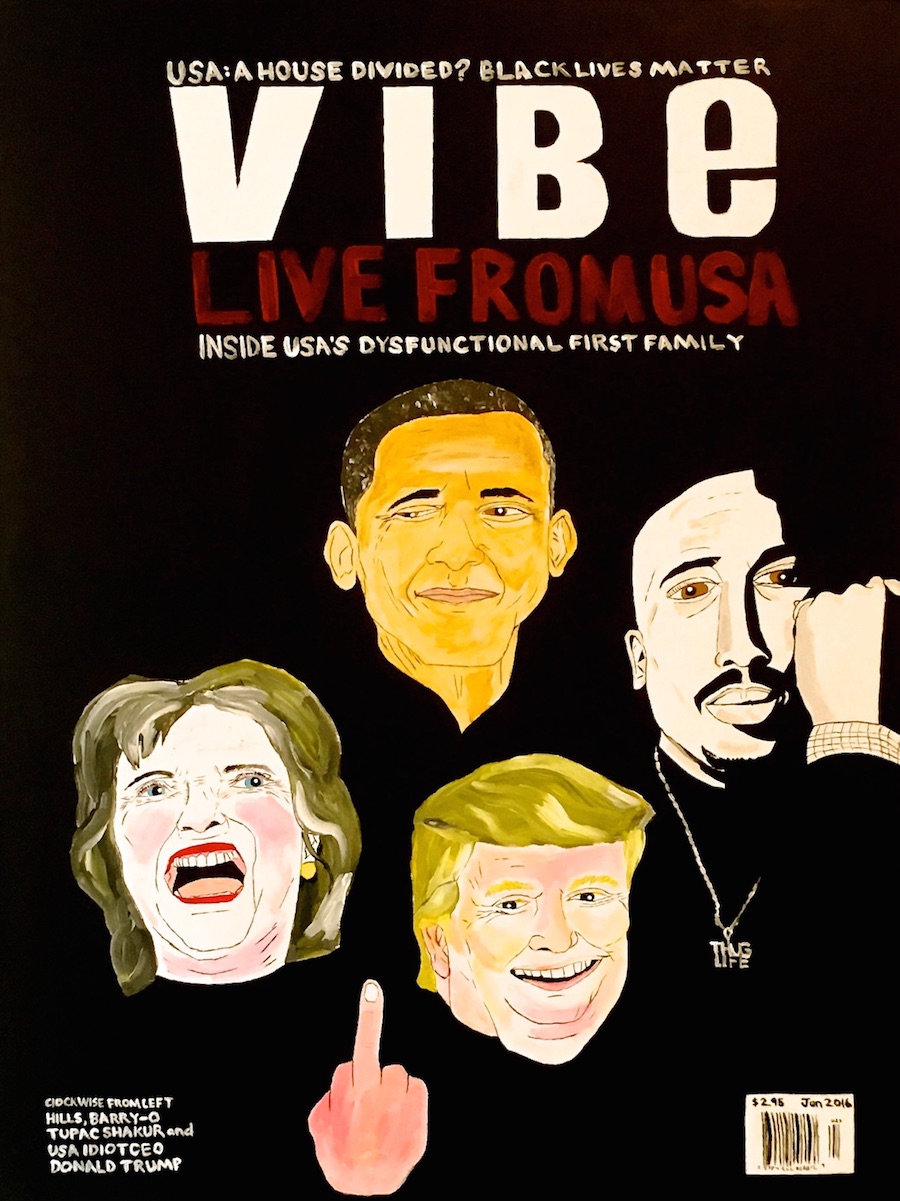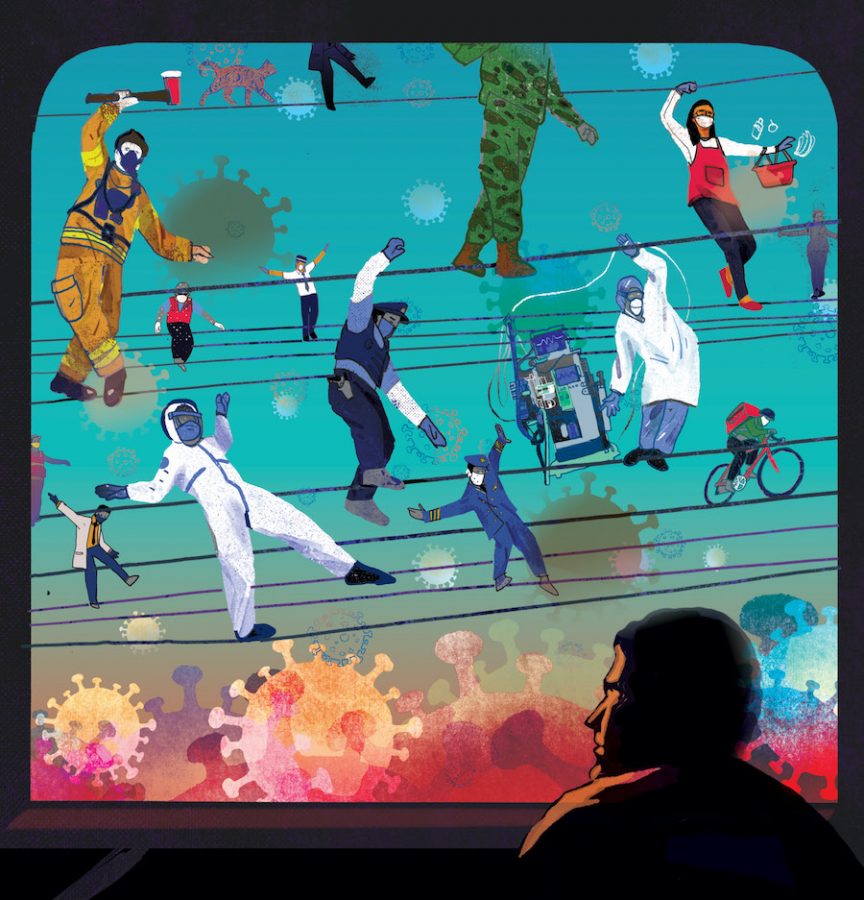“Stranger Than Fiction: This is America” exhibition explores contemporary America through a political lens
Nguyen Tran’s “Essential Workers” highlights the work of necessary workers during the COVID-19 pandemic. The piece was featured as the cover of the Chicago Reader in April.
October 28, 2020
Dittmar Memorial Gallery is combining political symbols and pop culture iconography this fall with “Stranger Than Fiction: This is America,” featuring visual artworks created by artists Henry Sandifer and Nguyen Tran.
The exhibit, open to the public through Nov. 15, unpacks issues such as systemic racism, political corruption and the COVID-19 pandemic.
Exhibit curator and Medill senior Karen Reyes said the exhibit’s timing amidst the presidential election is no coincidence. She added that for the Dittmar Gallery team, creating a “jumping off point” for conversations about injustice was imperative.
“I hope that people who see this art take the time to think about what they are seeing,” Reyes said.
Sandifer said the exhibit’s name was inspired by the aphorism “the truth is stranger than fiction.” The saying inspired him to start painting in 2017 after spending a decade as an actor and filmmaker. To analyze the absurdity of reality, he illustrates American political corruption, Sandifer said.
In his painting titled “Vibe,” Sandifer parodies VIBE magazine’s 1996 cover “Live from Death Row,” replacing rap industry’s Dr. Dre, Snoop Dogg and Suge Knight with former President Barack Ob

(Courtesy of Henry Sandifer)
ama, Hillary Clinton and President Donald Trump to depict America’s “dysfunctional first family.”
“When you read about this country and its history, it’s almost like a business, not necessarily a democracy,” Sandifer said. “For me, (the) government here is more or less like a criminal organization.”
Sandifer said “Vibe” works to expose “greed” and “corruption” in politics, but he intentionally included an illustration of Tupac Shakur like the original magazine cover did. To Sandifer, Shakur’s revolutionary spirit is inspiring.
“He spoke truth to power,” Sandifer said.
To “hold up a mirror” to modern America, Sandifer also depicts systemic racism. The painting, “Get Us Out,” centers images from Jordan Peele’s films “Get Out” and “Us” and references the year 1619, when enslaved Africans were first brought to the English colonies, illustrating a legacy of oppression.
Tran, one of the exhibit’s collaborators, similarly illustrates American racism in his mixed media collection combining traditional drawing techniques and the digital coloring and texturization available on Adobe Photoshop.

In his piece titled “Make America Great Again,” Tran drew a Make America Great Again hat but replaced all the “a’s” with white Ku Klux Klan hoods.
Tran said his graphic design background influenced his work for “Stranger than Fiction” by showing him the value of symbolism.
“I wanted to tell a story with simple drawings or simple icons that everybody gets right away,” he said.
The exhibit also features Tran’s piece “Essential Workers,” which was featured on the cover of the Chicago Reader in April. In the illustration, a silhouetted man looks out of a window at postal workers, doctors, firefighters and other necessary workers walking on what appears to be telephone lines.
“During the lockdown, I used to sit by the windows and look out,” Tran said about the inspiration behind the piece.
To highlight the fact that essential workers put their “safety on the line,” Tran drew them balancing on physical lines.
Both Sandifer and Tran said they hope individuals walk away from the exhibit ready to start a conversation with others.
“Hopefully, people just start asking questions and seeing the world for what it really is, rather than what they want it to be,” Sandifer said.
Email: [email protected]
Twitter: @JorjaSiemons
Related Stories:
— Dittmar Gallery holds exhibition showcasing systemic violence through sculpture
— Cuban artist Eduin Fraga chronicles daily life in Cuba through show, ‘Images of my Experiences,’ premiering at Dittmar Gallery
— Artist Hale Ekinci Discusses Dittmar Gallery’s Oya Exhibit


